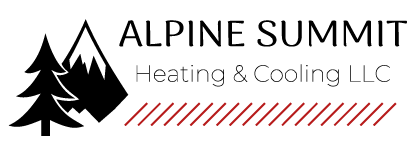Completing the search for your first home is thrilling. You’re probably trying to keep track of a dozen things or more about making the right choice. We believe that understanding your future HVAC system is crucial. The property’s HVAC system represents a significant investment and potential source of long-term costs, illustrating why a detailed inspection should be a top priority for first-time homebuyers.
In this guide, we’ll share seven tips for learning everything you can about a home’s heating and cooling setup. And if you want a more in-depth opinion from the pros, don’t hesitate to contact Alpine Summit Heating & Cooling. Our staff can share details about your options with industry insights that are second to none.
1. What Type of HVAC System Is It?
Start by clarifying what specific HVAC system the home features. Furnaces generally last longer than air conditioners, and relatively new types of HVAC systems like heat pumps can offer average life spans that are even longer. Tracking down the make and specific model gives you a clear idea of how much routine maintenance it might need.
2. How Old Is the Current HVAC System?
It also helps to learn how old the HVAC system is when you’re considering a potential new home. For the most part, HVAC systems tend to run for about 10-12 years. Having the knowledge of when it was installed helps you anticipate future maintenance needs or considerations if it might break down. Older systems are at a higher risk of problems, so budgeting for a replacement unit could be necessary sooner than you thought.
3. Is the Warranty Active?
Be sure to check the HVAC system is still under warranty. If it is, that’s great news because it can help with maintenance expenses. HVAC warranties should take care of parts and labor, but specifics will vary. Make sure you go over any terms that seem confusing to make sure you fully understand your coverage and any possible out-of-pocket costs.
4. Does the System Have a Documented Maintenance History?
Next, examine the maintenance history of the HVAC system, if that information is available. This service history can demonstrate if the system constantly broke down or how often maintenance is performed. Ask about records for key tasks like filter changes, which can indicate it received regularly scheduled tune-ups.
5. Do You Know Its Energy Efficiency Ratings?
Finding a home that features an HVAC system with high energy efficiency isn’t just smart; it leads to more manageable utility bills and less of an impact on the environment. Check out the seasonal energy efficiency ratio (SEER) ratings for air conditioning along with the annual fuel utilization efficiency (AFUE) for furnaces. High SEER ratings mean more efficient cooling throughout the season, while strong AFUE ratings mean the fuel is more effectively burned for useable heat.
6. Can You Spot Trouble After Completing an Informal Inspection?
Even if you don’t have the know-how of an HVAC technician, you should still inspect the HVAC system on your own. Keep an eye out for any concerning items that might have been overlooked. This might consist of odd sounds, stubborn patches of the house that are too hot or cold and attempts to cover up any obvious damage.
7. Have You Asked Your Local HVAC Professional?
If you’re unsure about the overall state of the HVAC system, it’s never a bad idea to get an assessment and recommendation from certified HVAC professionals. They are skilled at identifying things you might not, such as refrigerant leaks, damage to the wiring or flawed ductwork.
A Consultation with Alpine Summit Heating & Cooling Helps Take the Stress Out of Your Home-Buying Journey
Choosing your first home is meant to be a joyful event, and Alpine Summit Heating & Cooling wants to ensure yours is too. Connect with us at 208-561-1226. We can talk about how our HVAC services ease your mind, giving you what you need to make an offer with confidence.




